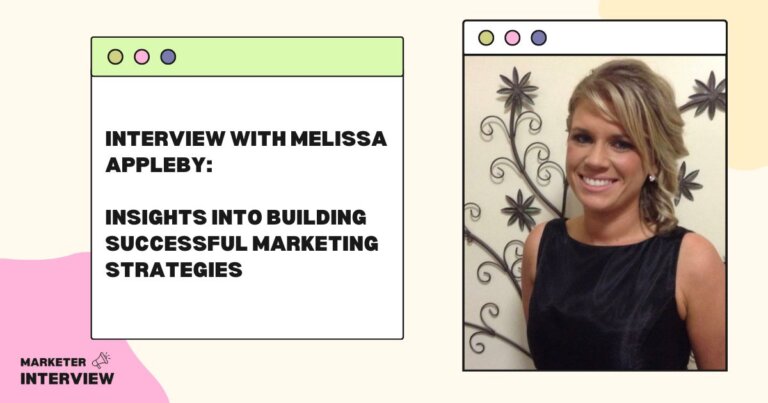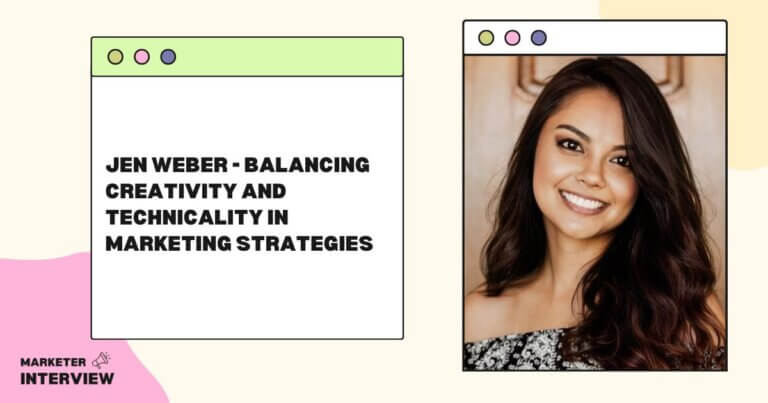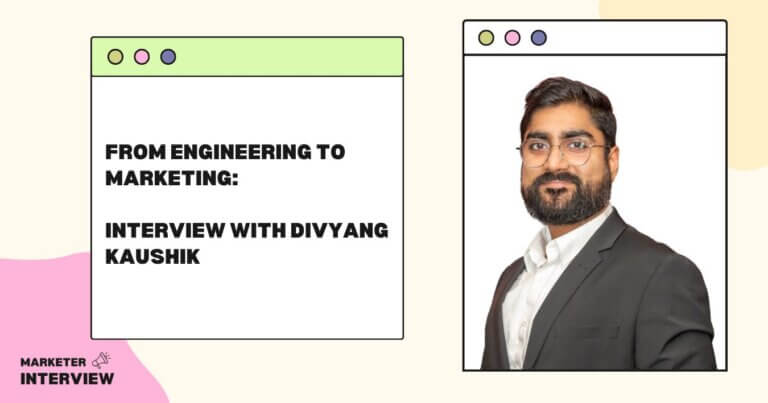A Deep Dive into Marketing Automation with Sidhant Jain
Welcome to Marketer Interview, the go-to blog for insightful conversations with top industry marketers.
In today’s interview, we have the pleasure of speaking with Sidhant Jain, Founder of GrowthVerse Funnels, a leading expert in marketing automation using no-code solutions.
With a background in mechanical engineering, Sidhant ventured into the marketing world, utilizing his skills to build and automate funnels for ed-tech startups, personal brands, and coaches.
Alongside his successful growth marketing agency, Sidhant manages his family businesses, Cake Sapphire and Cardin Bath Accessories.
We’ll delve into Sidhant’s journey and his expertise in marketing automation and gain valuable insights from his experience.
Contents
- 1 Can you tell us about your transition from mechanical engineering to marketing?
- 2 As a landing page and marketing automation expert, what principles do you follow to create high-converting funnels?
- 3 Could you share a notable success story where your marketing automation strategies significantly impacted a client’s business?
- 4 What are the most common challenges marketers face when implementing marketing automation?
- 5 What role does no-code play in marketing automation, and how has it revolutionized the process?
- 6 How do you approach the task of selecting the right marketing automation tools for a particular project or client?
- 7 What essential elements should every marketer include in their marketing automation workflow?
- 8 Are there any common mistakes or misconceptions you often encounter when working with clients on marketing automation projects?
- 9 How do you stay up-to-date with the latest trends and advancements in marketing automation?
- 10 With your hands-on experience in the field, what advice would you give aspiring marketers seeking to specialize in marketing automation?
Can you tell us about your transition from mechanical engineering to marketing?
I am a mechanical engineering graduate. Covid made me shift from Mechanical Engineering to Marketing Professional.
I was in my 3rd professional year of college when covid happened. I started learning digital marketing while sitting idle.
I started running ads for my mom’s business which was my guinea pig at that moment. And it blasted like anything. I earned a lot online during Covid time.
In 2021, I started taking freelancing clients, and then in March 2022, I started my agency, GrowthVerse Funnels.
As a landing page and marketing automation expert, what principles do you follow to create high-converting funnels?
We generally benchmark industry leaders and see what works for them. We follow the 3AR Rule and optimize based on user behavior.
In the 3AR Rule, we help our clients with Awareness, Acquisition, Activation, Retention, Referral, and Revenue.
Keeping the complete customer journey and psychology in mind, we design our marketing funnels and automation. For example, if our target audience is primarily Indian Females, then we know they will not communicate via email. Instead, we should implement Whatsapp automation for them.
We made a whopping sale of 200 course enrollments in just a single day at the ticket price of INR 500 with an acquisition cost of INR 100. We achieve it with Whatsapp automation.
People turned up to the free live webinar; hence we got more conversions. This happened because we knew our audience was active on Whatsapp, and tapping that audience was easy. Hence the conversion we got was incredible.
What are the most common challenges marketers face when implementing marketing automation?
Most marketers don’t plan a strategy before implementing it. They go with a blank mind, hence failing to implement what they thought of.
Automation is something that should ease the life of our clients. So we should focus on the proper strategy building. Then we should start the implementation process. It is easy to think or speak but challenging to get things done.
I generally use a simple framework. HOW, WHEN, WHERE, WHAT:
- HOW: How do you want customers to feel when subscribing to your offering?
- WHEN: When should the automation trigger?
- WHERE: Where should the data go? In the front end as well as the back end.
- WHAT: What will be done when this trigger happens, and the automation completes?
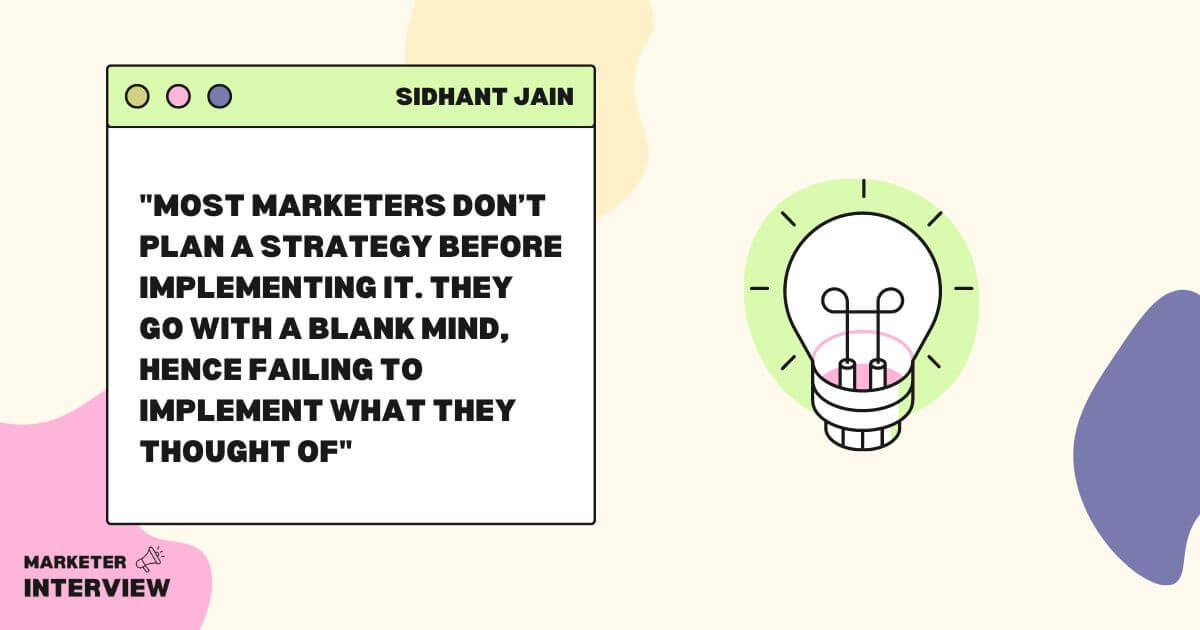
What role does no-code play in marketing automation, and how has it revolutionized the process?
No-code plays a revolutionary role in marketing automation. It has enabled non-tech people to implement the power of automation by just drag and drop options.
Several use cases are built upon no code automation software, just plug-and-play. If there is a solopreneur or a small team, they can learn basic automation and implement it for their businesses in just a couple of hours.
They just need to know the objection and the outcome of automation they want. It also satisfies that there will be no errors because humans make errors or miss out on details, while machines don’t.
Some of the tools I prefer are Zapier, Pabbly, Integromat, Active Campaign, etc. It depends on the use case and the applications we need to bridge. That’s what decides the tech stack we need to work upon.
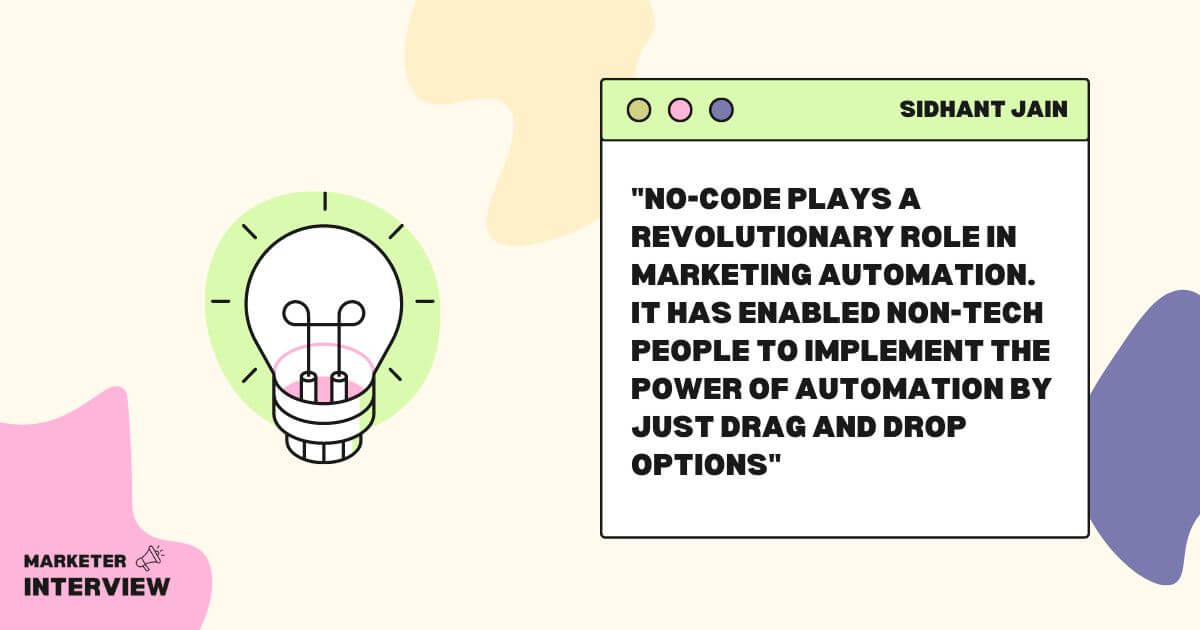
How do you approach the task of selecting the right marketing automation tools for a particular project or client?
Several primary factors play their role in deciding the right automation tool for a particular project or client:
- What are the use cases they want to implement?
- What all automation are they looking for?
- Which vertical of business do they want to get the automation done? Is it HR, Finance, Marketing, Sales, or another division?
According to their use case, the tech stack is decided. It also depends upon the significant factor, i.e., if they want just the one-time automation setup or regular maintenance.
What essential elements should every marketer include in their marketing automation workflow?
Some essential elements that every marketer should include are such as:
- Lead capturing and nurturing: To send automated msgs and emails with proper time gaps so that person gets regular communication
- Behavior-based Targeting: It can be tracked if someone opens an individual mail. The further comms can go according to that.
- What are the different tools that need to be linked together? Plan the automation accordingly.
Plan some up-selling and cross-selling campaigns. This will help the client to get more trust in automation.
Are there any common mistakes or misconceptions you often encounter when working with clients on marketing automation projects?
Some of the common mistakes are:
- Not planning the strategy and just starting the execution
- Not thinking about the right software and tools to bridge things up.
- Lack of proper data points and collection sources. What and when to connect.
- By making the simple process complicated. People don’t think directly. Instead, they complicate the process by adding steps that are not necessary or needed.
- Not thinking about the human mind and psychology. Humans tend to get irritated if there is an excess of automation and non-human touch.
- Not planning the sales strategy is the biggest mistake of all. A project should involve the right selling strategy with proper upselling, cross-selling, and user management techniques.
How do you stay up-to-date with the latest trends and advancements in marketing automation?
I usually follow people who are masters in automation worldwide.
They tend to introduce different use cases and how they implemented a particular technique/use case in their or clients’ business. That gives an overview of how the industry is going.
I also follow the blogs and youtube channel of Pabbly, a no-code automation alternative to Zapier. They share the latest techniques and use case videos.
With your hands-on experience in the field, what advice would you give aspiring marketers seeking to specialize in marketing automation?
They should not think in a complicated manner. They should simplify their logic and pen down the idea of implementation. It will help them clarify the objective and the outcome of the automation process they are planning.
They must follow the people who specialize in automation. People in the industry for decades will share their first-hand experience on how things work.


